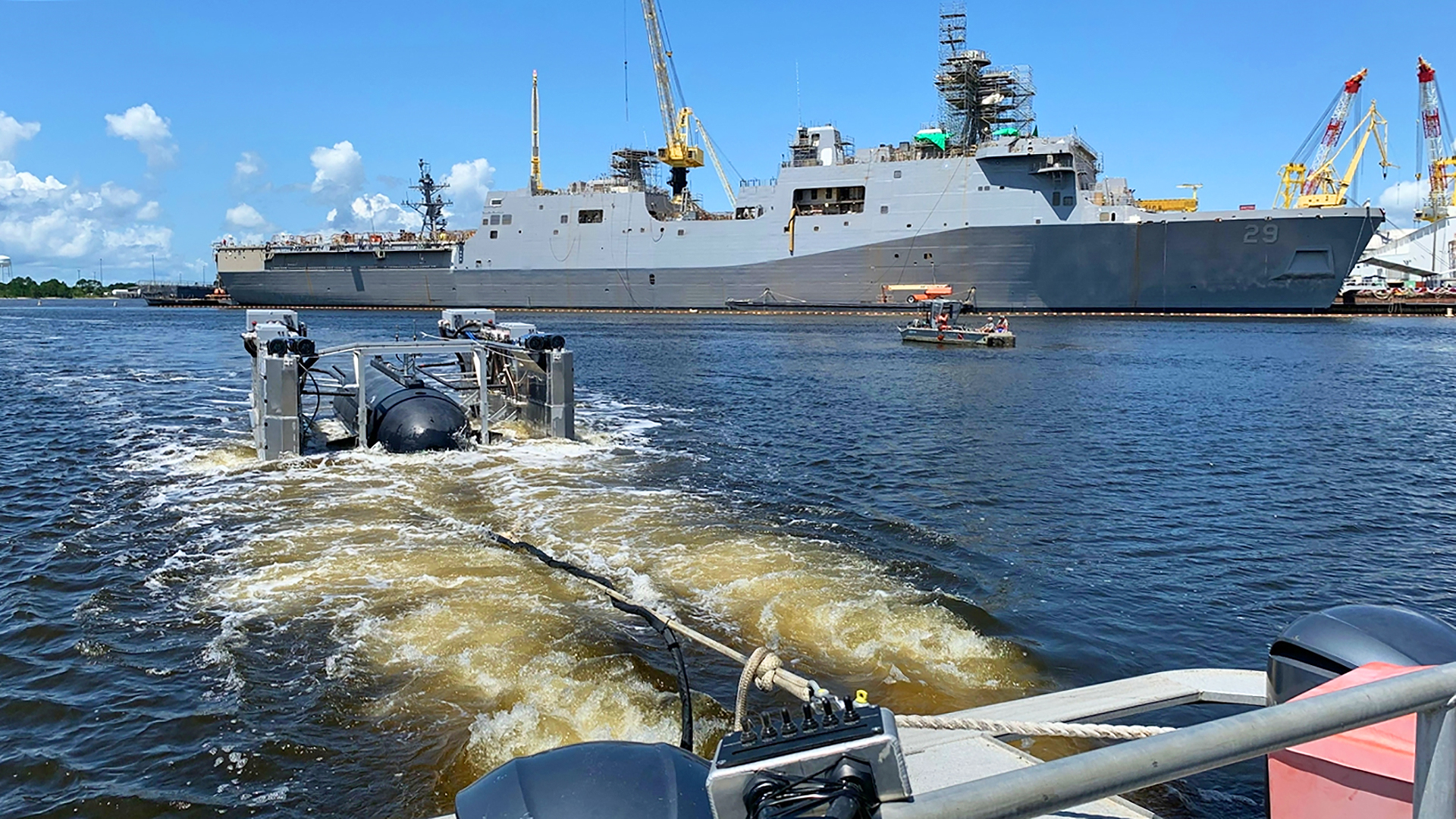Shipbuilder Huntington Ingalls Industries, or HII, announced yesterday that it has conducted a demonstration in Mississippi’s Pascagoula River that it says helps prove that its San Antonio class amphibious warships can launch, operate and recover large-diameter unmanned undersea vehicles (LDUUV).
HII’s Advanced Technology Group performed the launch and recovery demonstration with a prototype portable drydock-like platform called Pharos and HII’s LDUUV Proteus, the company said in a media release on June 13.
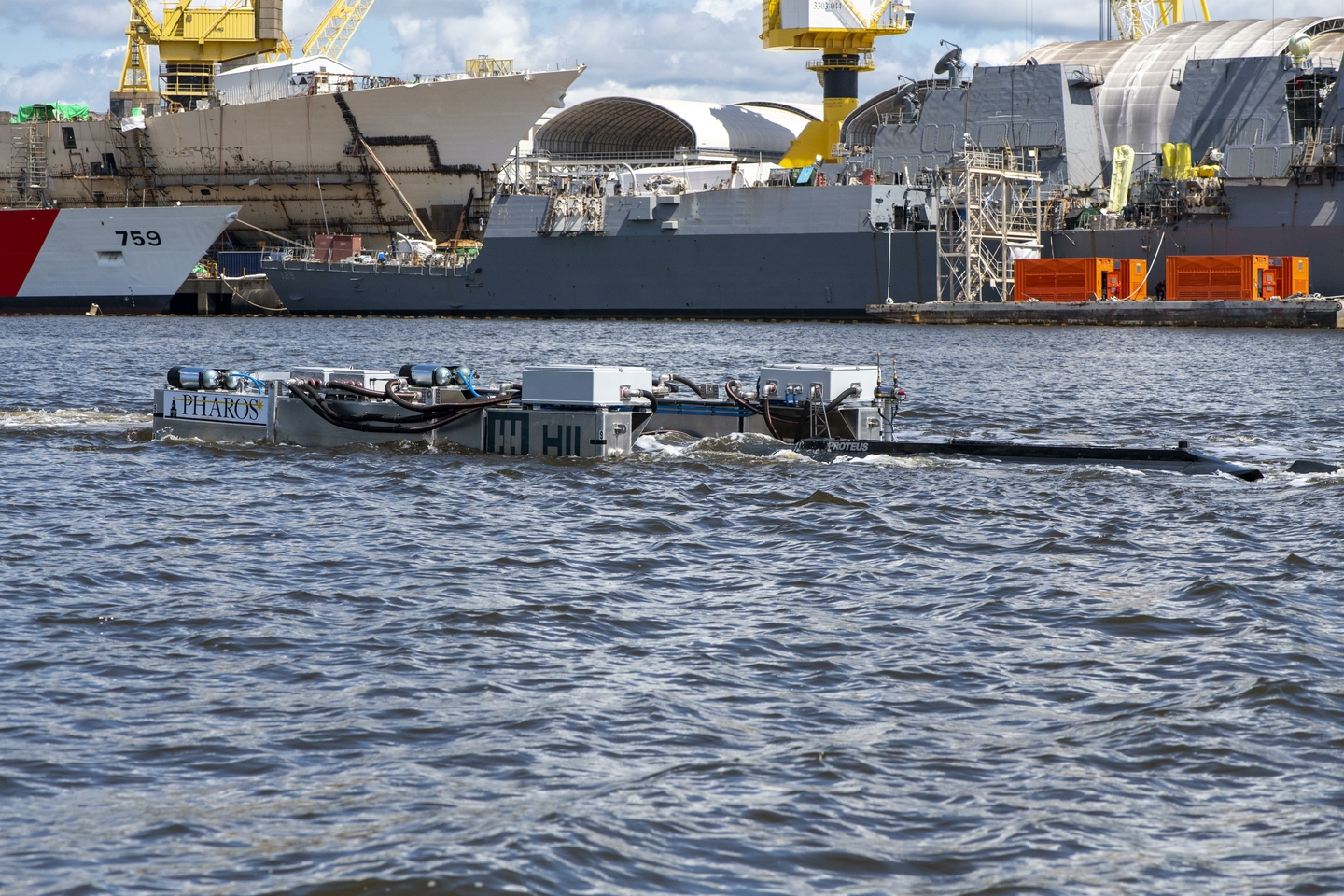
Pharos is outfitted with heavy-duty wheels to allow it to maneuver within the well deck of an amphibious ship for stowage on the vehicle decks. Pharos can be rolled off the back of an amphibious ship while using the ship’s existing winch capabilities to extend and retract the platform and allow it to be launched and recovered from the rear well deck.
The demonstration involved having the Proteus LDUUV approach and be captured by the Pharos cradle.
Then Pharos was towed behind a small craft simulating an amphibious ship at low speed. Pharos was put in a tow position, then using a remote control, it was ballasted down in the trailing position allowing the LDUUV to navigate into Pharos.
Once the unmanned undersea vehicle (UUV) was captured, Pharos was floated back up into a recovery-and-transport position.
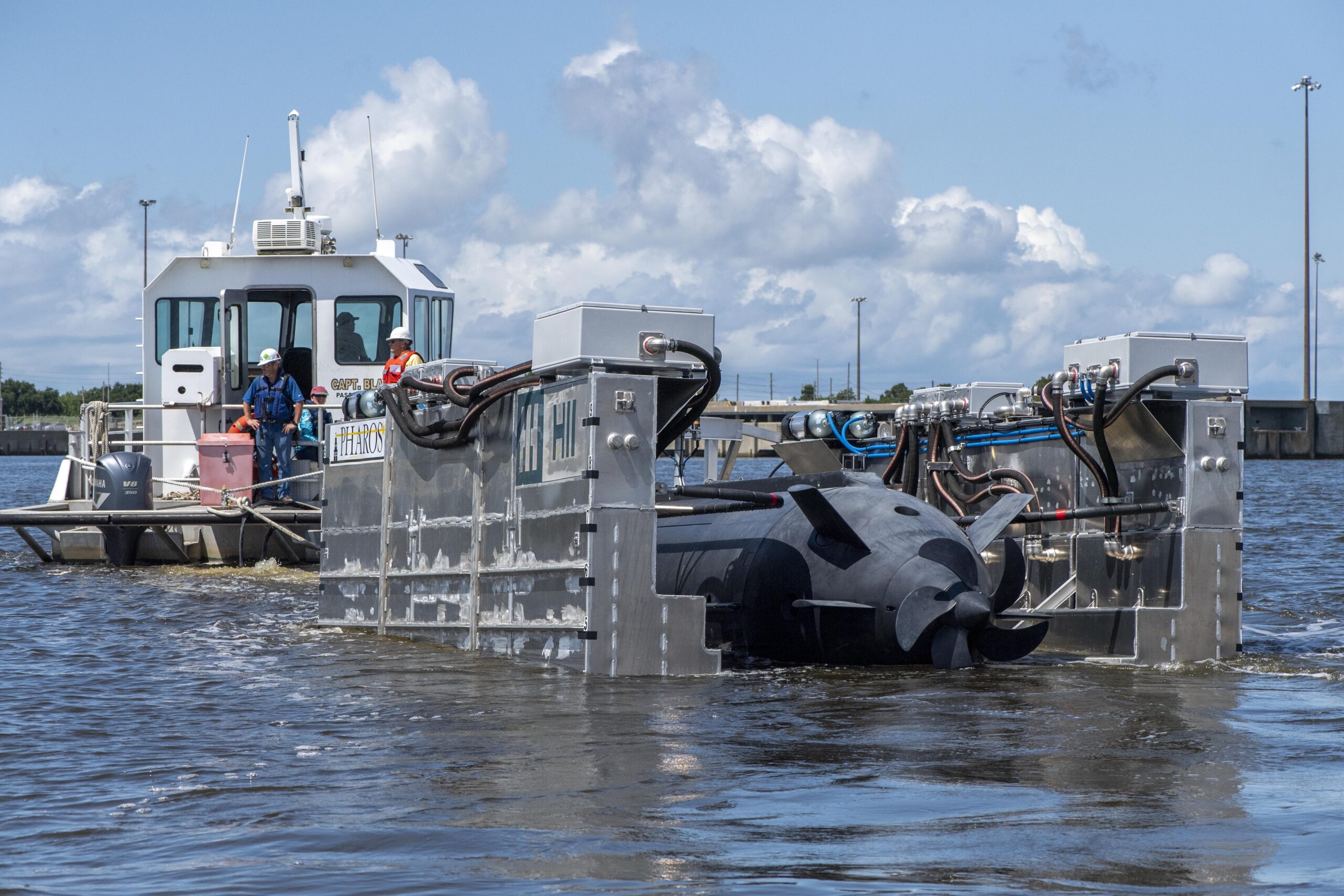
The demonstration also included ballasting down to launch the LDUUV after the capture.
The Pascagoula River demonstration, which took place in calm waters, was one of the first of many for the platform, company spokesman Danny Hernandez told The War Zone, adding that “there will be more testing.”
Though the Navy in 2019 created its first ever dedicated underwater drone unit, Unmanned Undersea Vehicle Squadron One, or UUVRON 1, Hernandez said the Pascagoula River demonstration “is not aimed at any existing DoD program,” Hernandez said.
HII’s Proteus LDUUV was conceived of as a dual-mode undersea platform that can serve as both a Navy SEAL delivery vehicle and an unmanned undersea vehicle.
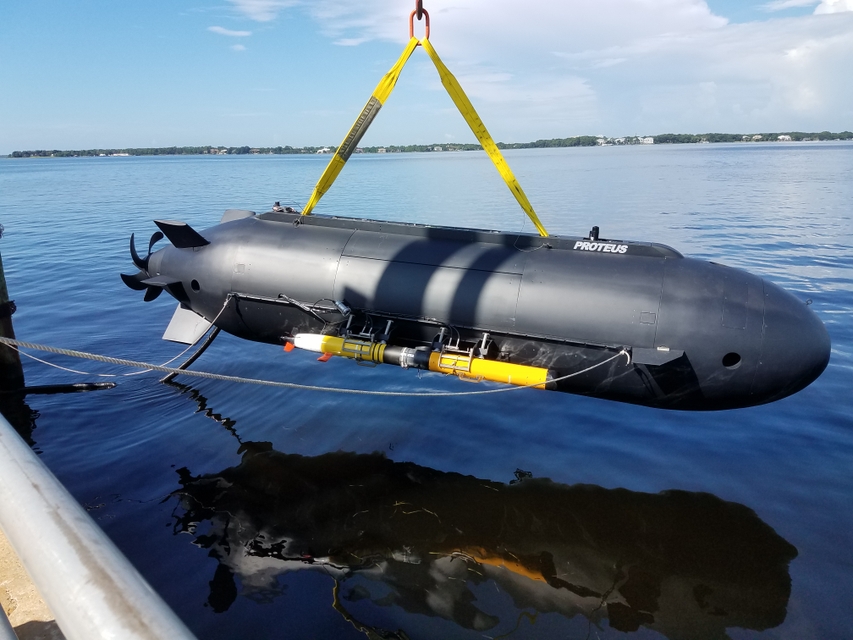
Currently, it “is a test platform to facilitate development of new autonomy capabilities and integration of the latest technology and payloads,” Hernandez said. “In this case, it was used to demonstrate this launch and recovery capability of a large-diameter UUV.”
Proteus is a large-class UUV and can be configured to test sensors, autonomy, payloads, energy storage systems and other technologies, according to HII.
It features forward-looking sonar, cameras, a variable buoyancy system, baseline 148 kWh energy; extended range options and a 170 cubic feet of customizable cargo volume with external cargo capacity.

Proteus successfully completed autonomous contested battlespace missions during the 2017 Advanced Naval Technology Exercise (ANTX) at the Naval Surface Warfare Center (Panama City Division).
Developed by HII’s Technical Solutions division (Undersea Solutions Group) and Battelle, Proteus “entered a contested battlespace to deliver and launch three smaller unmanned UUVs with unique roles in the overall mission objective,” according to an HII media release.
The concept came out of a previous LDUUV imitative. As the large underwater drone developed, it became clear to HII that is was big enough to be turned into an optionally manned platform similar in size to the SEAL Delivery Vehicle that had been built for years.
The Pascagoula demonstration “was targeted at the ability to launch and recover large-diameter UUV’s from Pharos,” Hernandez told The War Zone. “The current size of the Pharos prototype was designed for Proteus, however the design is scalable and reconfigurable to fit various UUV’s or [unmanned surface vehicles] USVs.”
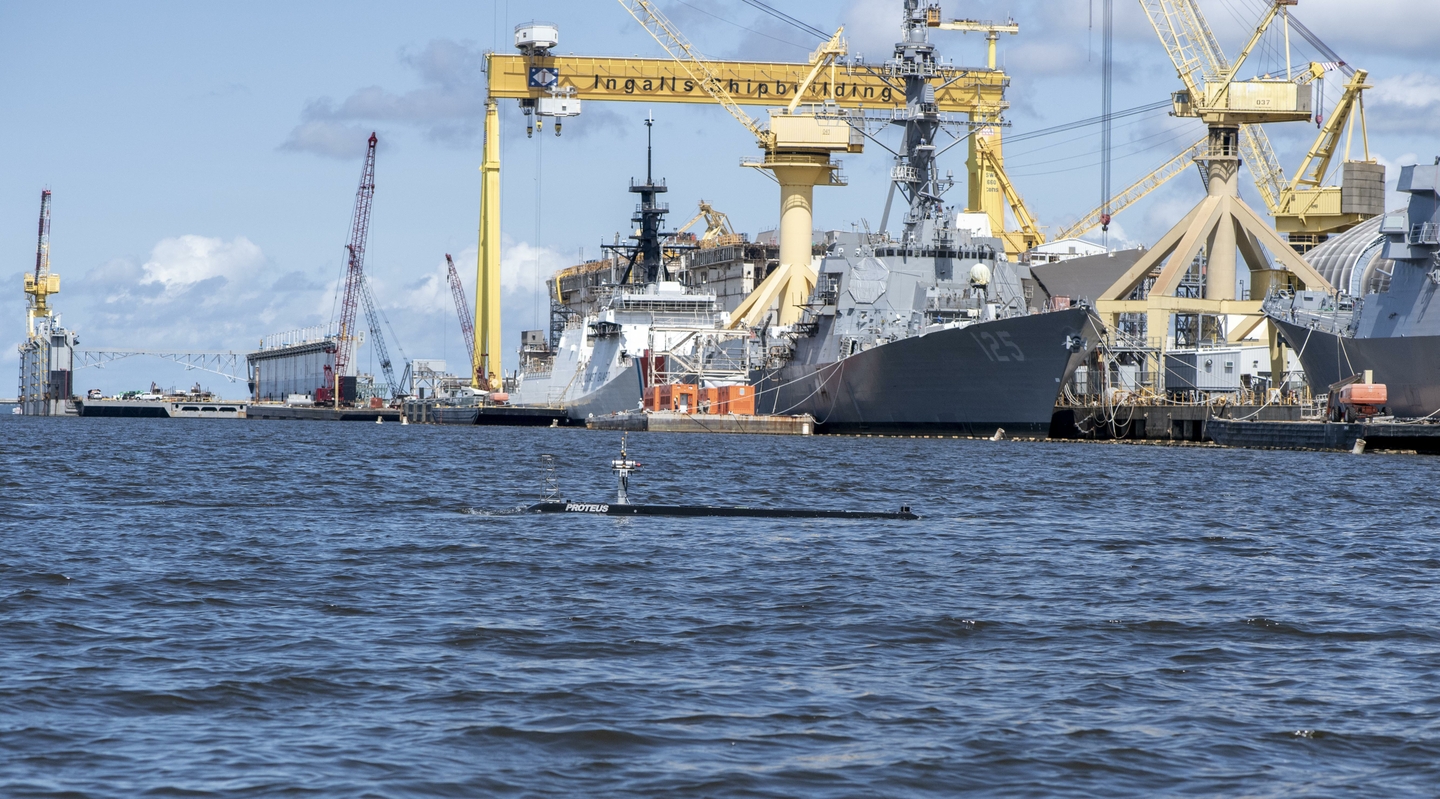
The Navy may not have a formal requirement for this system, but this is exactly the kind of thing they’re going to look at going forward. They canceled the Snakehead LDUUV program specifically as a result of issues in the launch and recovery concept with submarines and still need some kind of way to launch and recover the Orca extra-large unmanned underwater vehicle, or XLUUV.
The Navy envisions a small fleet of these 85-foot XLUUVs patrolling the ocean depths, ready to dispense undersea mines at a moment’s notice. That is just one of the type’s potential missions, with it being a highly reconfigurable, long-endurance platform. Testing begins this summer on its primary role of carrying anti-ship mines in a 34-foot modular payload compartment.
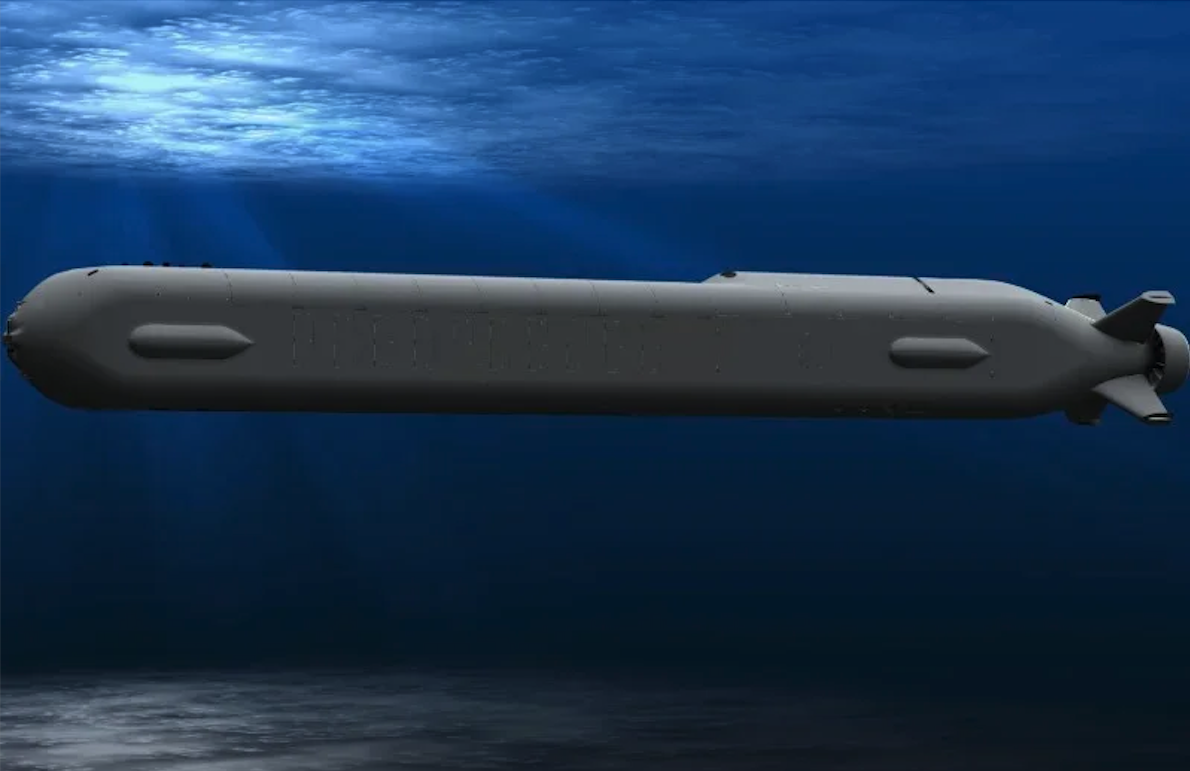
But full delivery of the Orca is apparently delayed, according to Bloomberg News, which reported Tuesday that budget documents show the first of five operational Orca drones may be delivered in September 2023, rather than December 2020, “due to contractor challenges and supplier issues.”
Three years ago, Boeing beat out Lockheed Martin Corp. for the $274 million fixed-price contract that requires the company to absorb overruns above a certain threshold.
Meanwhile, news of the new LDUUV recovery testing system comes as the Navy wants to do away with San Antonio class production.
The sea service wants to buy one last vessel in that class and then shutter the line, it announced in its fiscal 2023 budget request, Defense News reported.
In its media release, HII noted that its San Antonio class amphibious warships “have unique well decks that can be flooded to launch and recover various maritime platforms. The U.S. Navy has previously demonstrated the ability to recover spacecraft from the amphibious warship well deck.”
While this is true, other ships in the Navy’s fleet can do this, including all of the ‘Gator Navy’s’ amphibious ships aside from two America class amphibious assault ships that were built without a well deck. The San Antonio class is the only non-big-deck amphibious assault ship currently in production though.
As the Marines move away from relying on fleets of huge amphibious assault ships, finding other uses and justifications for the existence, and especially for building more, is clearly top of mind. The fact that the San Antonio class can play mothership to large unmanned undersea vehicles is certainly a point worth making as these new unmanned systems become critical to future naval operations.
While the Pharos system demonstration wasn’t aimed at any specific DoD program, HII said the concept is geared to help the Pentagon operate in the unmanned naval domain.
“HII is committed to advancing the future of distributed maritime operations and demonstrating our capability to support unmanned vehicles on amphibious ships,” said Kari Wilkinson, president of Ingalls Shipbuilding, which hosted and partnered in the demonstration, said in a media release. “I am very proud of our team’s initiative to strengthen the flexibility of the ships we build by anticipating the challenges and opportunities that exist for our customers.”
Contact the author: howard@thewarzone.com and tyler@thedrive.com.
Editor’s note: The HII unit that developed the Proteus since changed its name to Mission Technologies.
